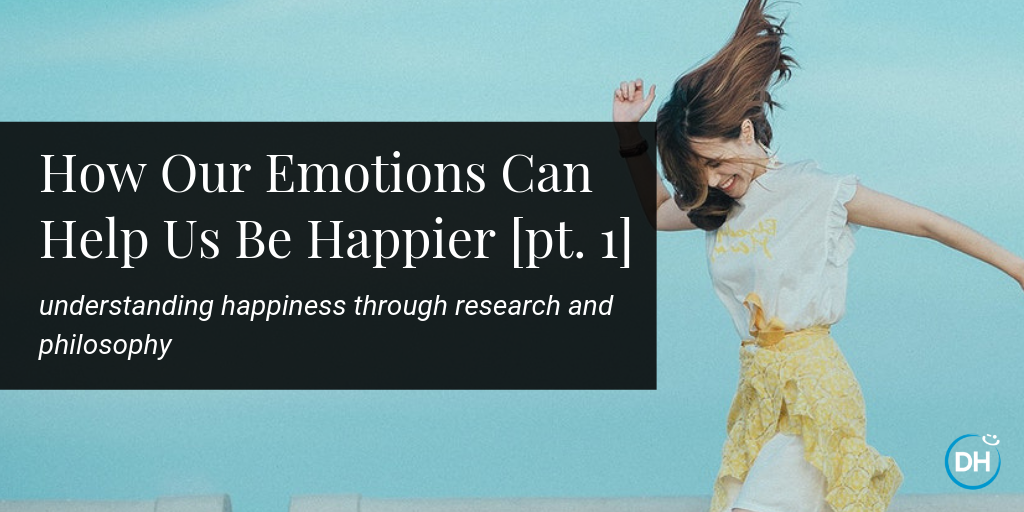
Happiness is hard to maintain especially when your life's circumstances keep changing. It can be incredibly frustrating when you're trying to be happy but feel emotionally unbalanced.
In this post, we are going to introduce part 1 of our research on the Pendulum Theory that explains WHY we react the way we do to the circumstances of our lives. In this series, you'll learn to use life's circumstances in your favor and to create sustainable happiness.
Happiness has dual nature: corporeal (biological) and ideal (non-corporeal, spiritual). Meaning, happiness manifests itself at two levels: at a level of our body (corporeal) and at a level of our mind (ideal). The corporeal component of happiness refers to the comfort of our body: we feel healthy, secure and sated.
Our comfort zones define the borders of geographical and psychological space where stress and anxiety are minimized, things are familiar, basic desires are satisfied and we feel control over that.
The ideal component of happiness derives from an aim to expand our comfort zone through self-development and fulfillment of our dreams, which are shaped by our social and spiritual values. We feel happy when we do something meaningful, when we contribute to something bigger than we are, when we get social recognition and approval.
These two components – corporeal and ideal – complement each other and equally contribute to our overall happiness. Achieving happiness at these two levels relies on the same mechanism of a PENDULUM.

This mechanism works in the daily, weekly, monthly and annual cycles of our life.
How? Let us take a closer look at an example of corporeal (body) level of happiness first:
Daily glucose-insulin pendulum determines our mood and productivity at work. When you are enjoying a big piece of a delicious cake on the occasion of your co-worker’s birthday, the pendulum swings forth. The jump of blood glucose level provides your body with energy, you feel joy and radiate cheerfulness.
However, in a while, the pendulum swings back: you feel tired and annoyed. Your pancreas reacts by producing lots of insulin that reduces the blood glucose level. You are not effective at work anymore, you feel irritated by your co-workers and you just want to be in a better mood (and to swing that pendulum back). So the only thing on your mind is how to get that afternoon pick-me-up, usually an extra snack or a sugary drink.
Related: Happiness vs. Pleasure and Why it Matters at Work
Looming Project Deadlines
The same mechanism works in our social and spiritual lives. Let us call the two ends of the emotional pendulum “euphoria” and “anguish”. We all know what the stress of a close deadline for a project feels like. While working on an important project, you might deprive yourself of self-care or a social life. Eventually, you feel exhausted, desperate and burned out.
When that project is finally completed, the pendulum swings in opposite direction: you feel contentment, excitement and joy. So when you’re under pressure of a deadline, the pendulum swings towards discomfort and stress; and then, when completed, your success swings the pendulum towards the positive end.
Related: How to Practice Self-Care at Work
A Case of the 'Mondays'
How often do you dread Monday mornings? On Fridays, you’re excited to start your weekend (pendulum swings towards “euphoria”). Then your excitement quickly dwindles on Sunday. When Monday morning comes, your pendulum swings towards the side of “anguish”.
It’s natural to want the pendulum to loom closer to the positive side. But is it truly possible to make the pendulum freeze in place and feel pleasure and joy forever?
The answer: obviously, it is not.
Even if we want our pendulum to just stay within our comfort zone, we cannot. Why? For one simple reason: the existence of an unavoidable and inexorable force called CIRCUMSTANCE.
Even though the pendulum keeps swinging back and forth within the spectrum of our emotions, we can move happiness outside of the pendulum. We can experience continuous happiness, but it takes some work.
Discover how to apply the Pendulum Theory for living a happy life is coming soon in our next post!
How can you apply the Science of Happiness to your everyday life and business model?
.jpg)
Aligned with DH core values, Roman and Uliana are working on techniques and recommendations for individual happiness and improvement of workplace culture. They both currently live in Lviv, Ukraine. Roman has his MD, MBA, is a business coach, blogger, artist, founder of Purij Design corporation, and a knight of the Order of the European Association of Business. Uliana has her PhD in Philosophy, is an Associate Professor of the Department of Philosophy and Economics at Danylo Halytsky Lviv National Medical University.